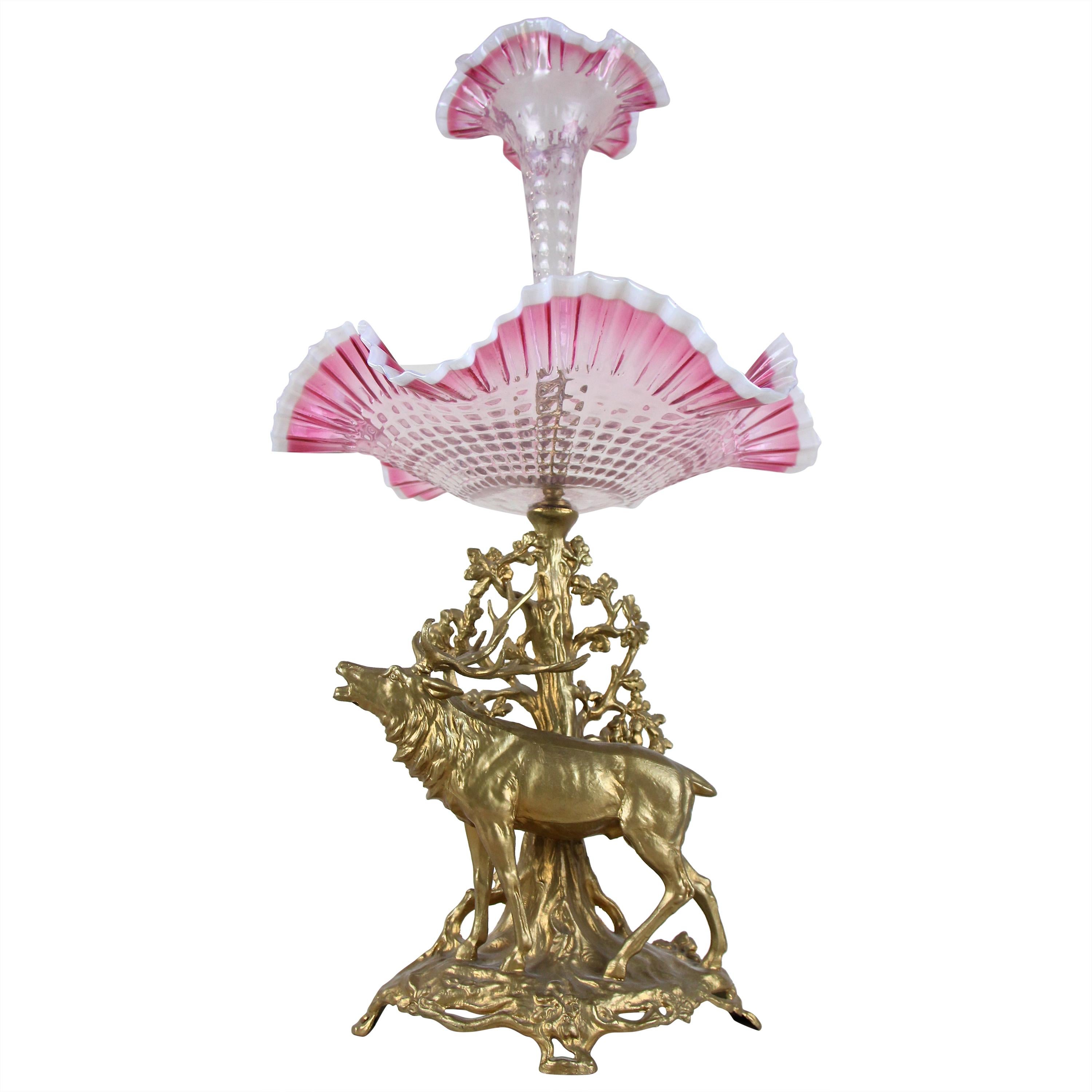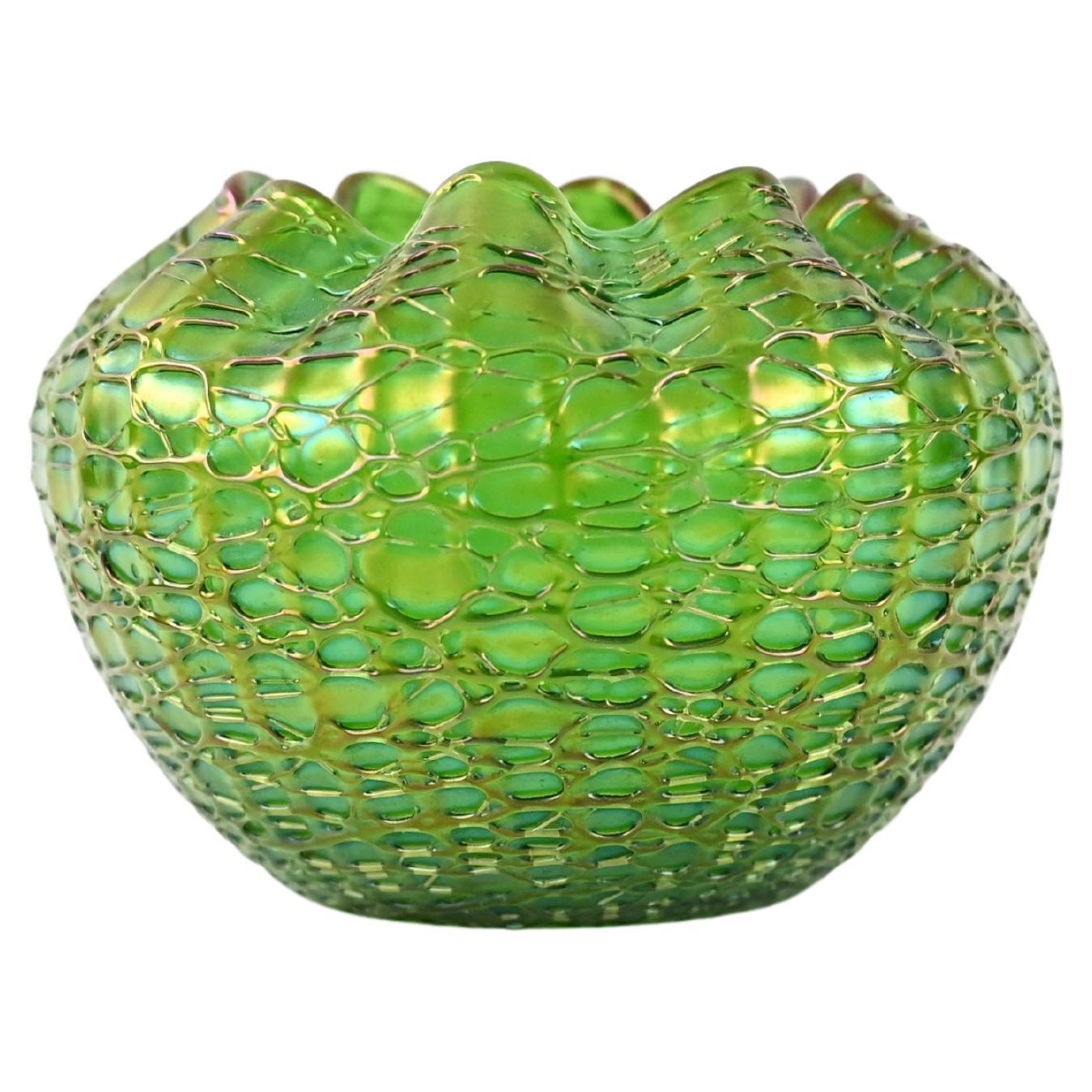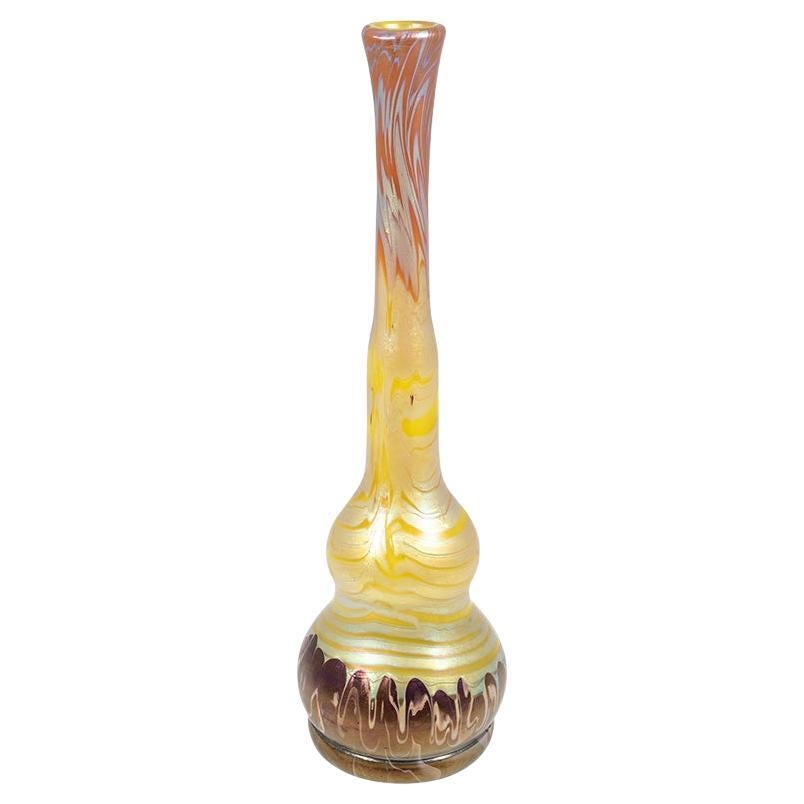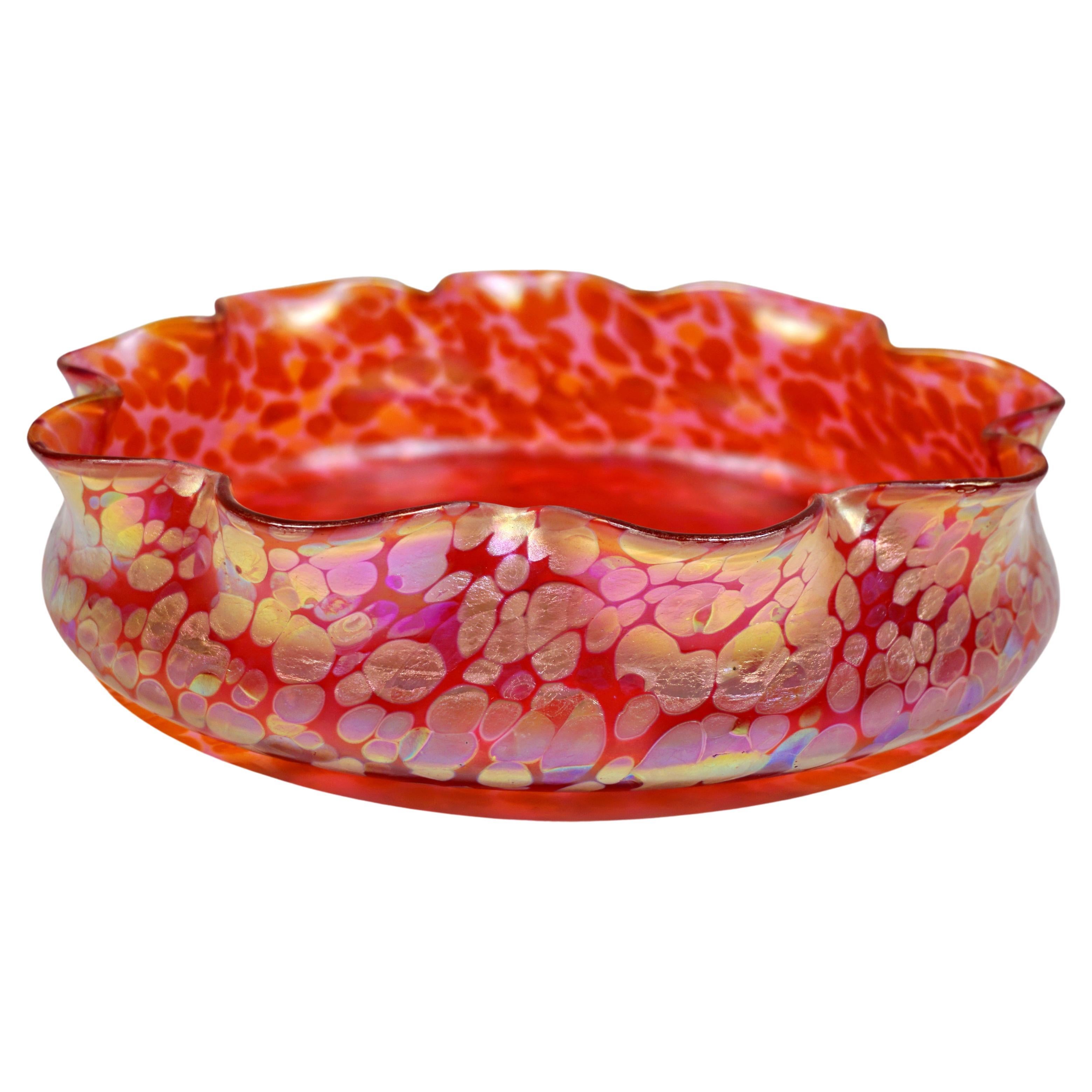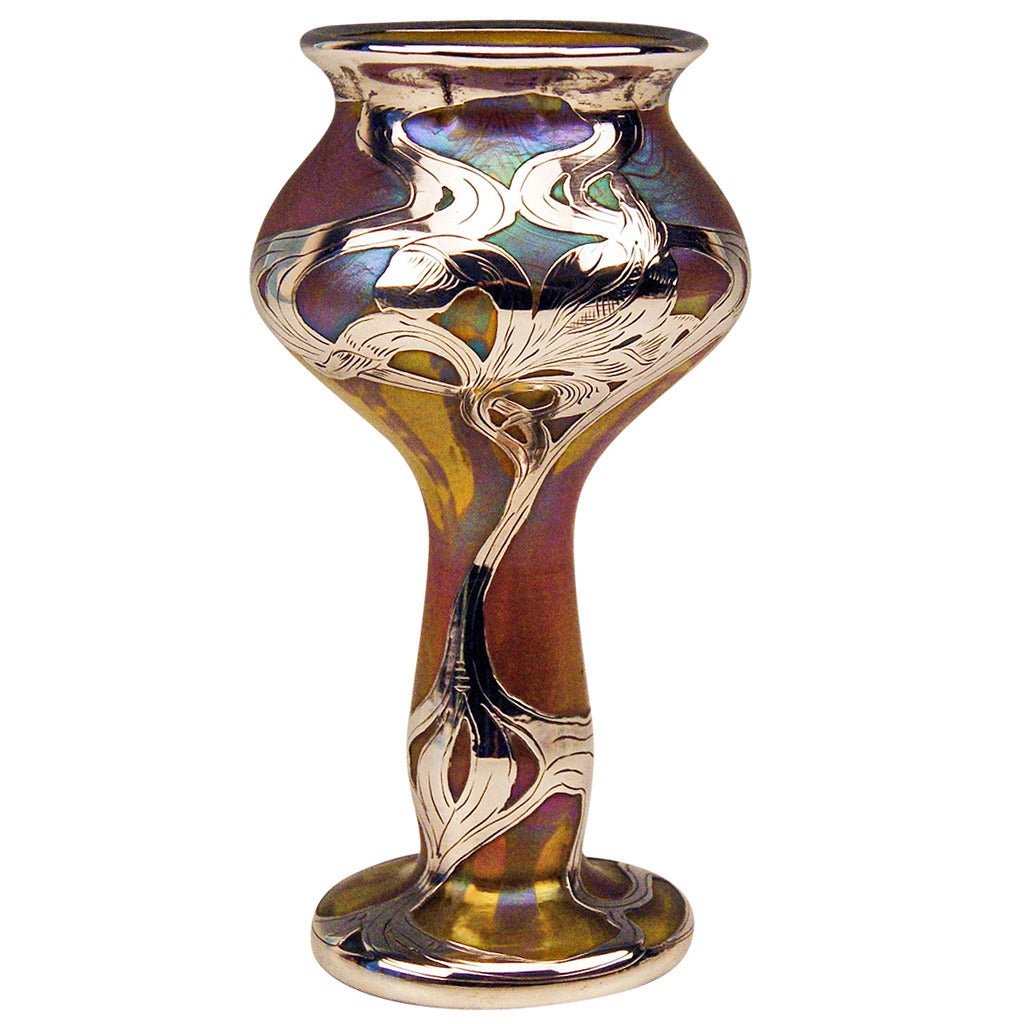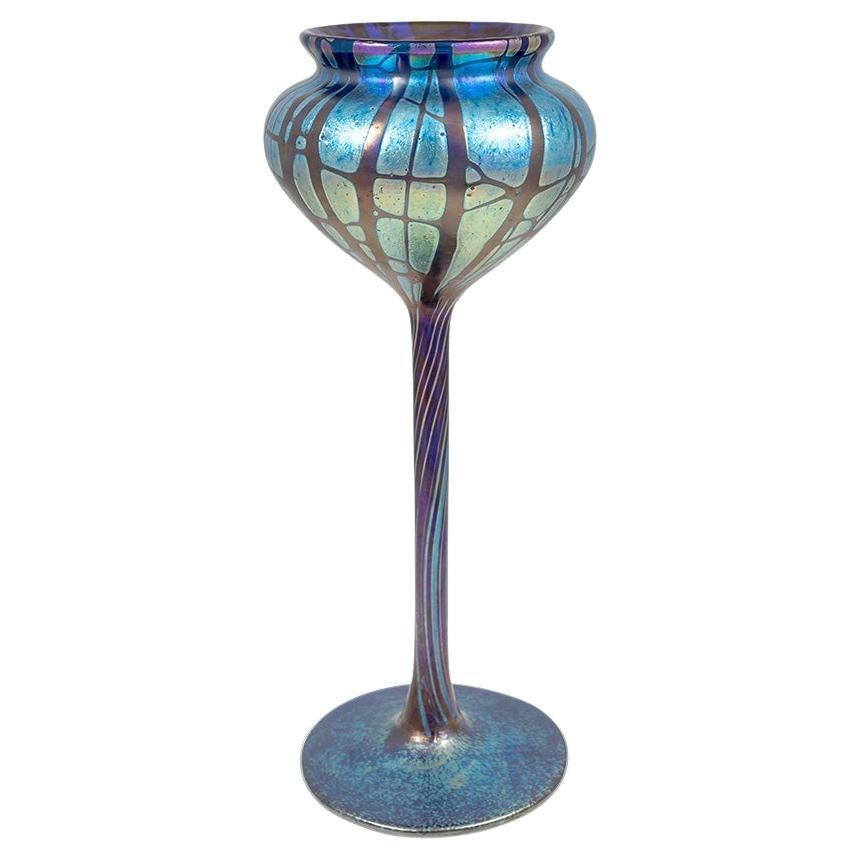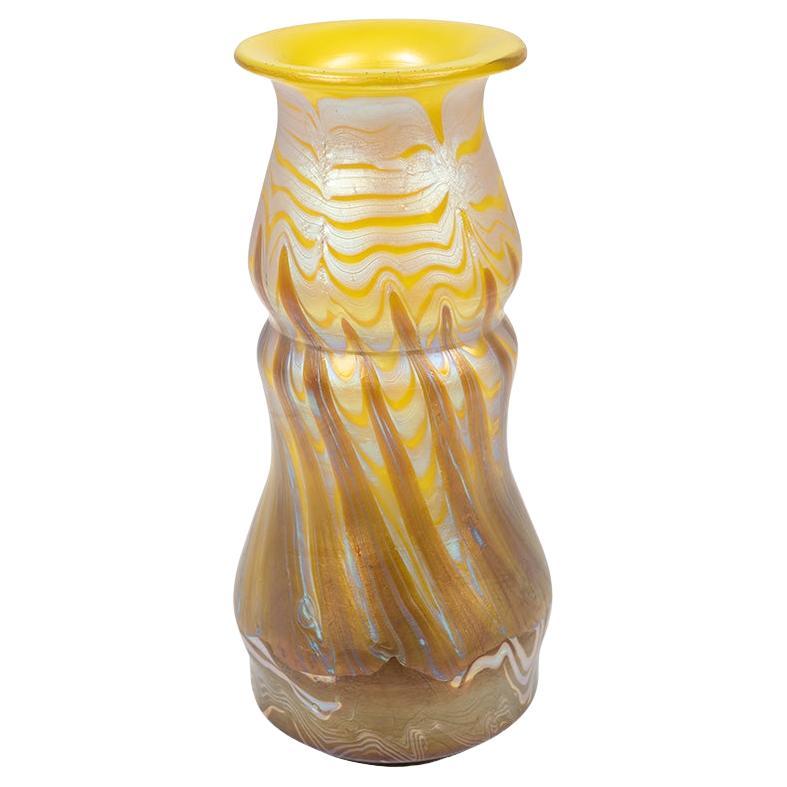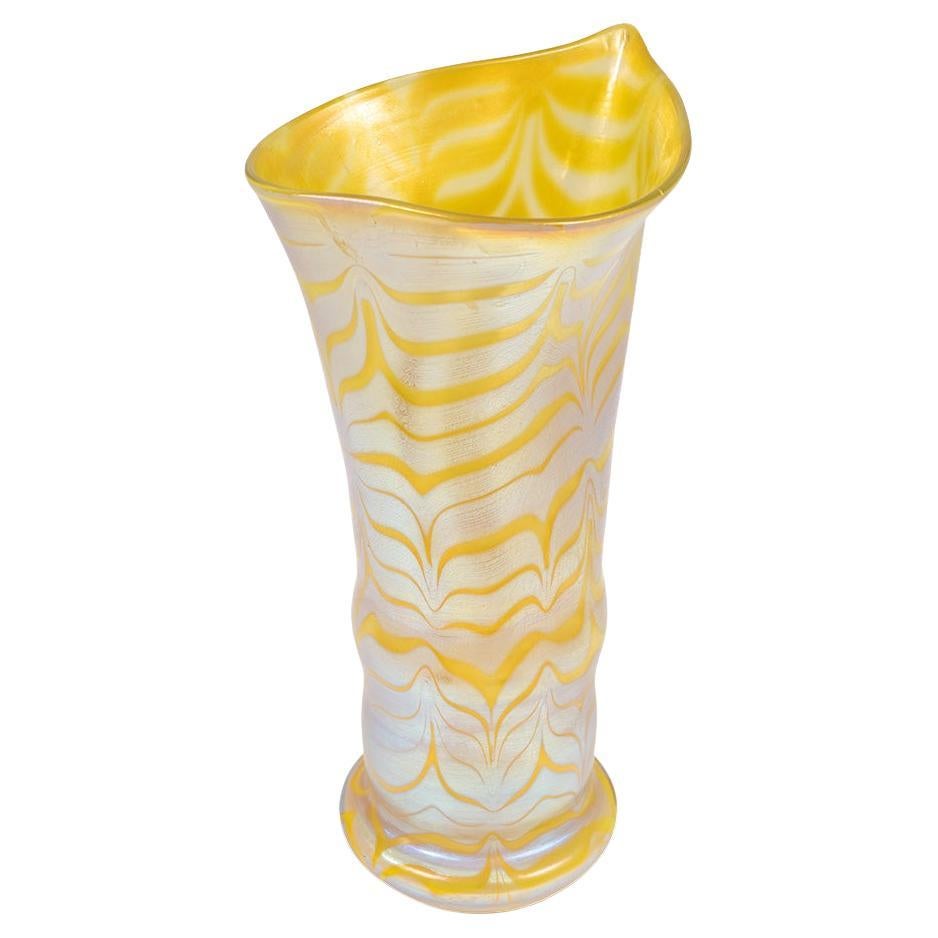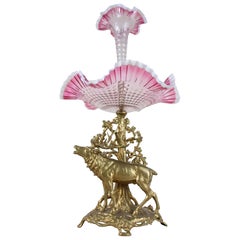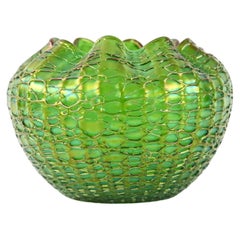
Art Nouveau Loetz Style Spider Web Bowl on Stand, circa 1900
View Similar Items
1 of 7
Art Nouveau Loetz Style Spider Web Bowl on Stand, circa 1900
About the Item
- Similar to:Loetz Glass (Maker)
- Dimensions:Height: 12.5 in (31.75 cm)Width: 10.5 in (26.67 cm)Depth: 10.5 in (26.67 cm)
- Sold As:Set of 2
- Style:Art Nouveau (Of the Period)
- Materials and Techniques:
- Place of Origin:
- Period:1900-1909
- Date of Manufacture:1900
- Condition:
- Seller Location:Redding, CA
- Reference Number:1stDibs: LU96403023532
You May Also Like
- Vase Loetz , Style : Art Nouveau , Bohemia, circa 1900By Loetz GlassLocated in Ciudad Autónoma Buenos Aires, CLoetz The glass factory, originally founded in 1836 by Johann Baptist Eisner, was taken over. Loetz was the premier Bohemian glass works during this period. It was located in Klostermühle, near Rejštejn in the Sušice district in South-West Bohemia, which belonged to the Austro-Hungarian Empire until 1918. Susanna Loetz, widow of Glass entrepreneur Johann Loetz in 1852. She renamed the company "Glasfabrik Johann Loetz Witwe", a name that was retained until all activities were stopped in 1947. In 1879 it passed to Max Ritter von Spaun. Under his guidance, together with director Eduard Prochaska, the glassworks flourished as never before and enjoyed its most successful period. Von Spaun and Prochaska concentrated on the development of innovative glass types and new production techniques. Their first successful speciality was a glass type simulating semiprecious stones. It is often called "Marmoriertes Glas" ("marbled glass"). The range contained Onyx (red/brown), Karneol (red/pink) and later Malachit (green). It was introduced in the second half of the 1880's. From the same period dates the Octopus glass, of which the decor resembles the tentacles of a cephalopod. The production of Marmorier-tes Glas was resumed in 1906, in different colours like yellow and white. Octopus, 1885-1890, 1885-1890, unknown, an Malachit, 1885-1890, unknown, The master glass-blowers of Klostermühle had already carried out experiments with iridescence in the first half of the 1890's, and they produced the Olympia, a classically inspired olive green type, in 1896. Similar, in variants of creta green, bronce or Olympia and averse to any redundant decoration was the Glatt decor. It highly contrasted with the more elaborate finishes of that time, but it constitutes a part of the production with a deep sense for taste and quality. Most of the pieces shown in the "Glatt" decors were manufactured for Max Emmanuel in London. The glatt decor remained in use for many years. The Chiné decor had thin glass threads spun around the body in irregular patterns. It is not to be confused with the type of glass that was produced by Kralik. Loetz "Chiné" came in clear, opal, green and pink, Kralik "Chiné" in dark purple. The logical sequel to Chiné was the Pampas decor, green or cobalt blue, in which the threads almost disappeared in the surface, with iridised parts in between. Around the same time the dotted Papillon decor was introduced. The beautiful silver spots were employed on a wide array of models and quite effective on the gooseneck (water sprinkler) and sea shell...Category
Antique Early 1900s Austrian Art Nouveau Glass
MaterialsArt Glass
- Art Nouveau Centerpiece with Stag Frilly Glass Bowl or Vase, Austria, circa 1900Located in Lichtenberg, ATExtraordinary, large Art Nouveau centerpiece with frilly glass bowl and vase, made in Austria in the turn of the century circa 1900. The beautiful pastel pink shining glass bowl sits on an artfully processed bronzed metal cast base...Category
Early 20th Century Austrian Art Nouveau Centerpieces
MaterialsMetal
- Loetz Art Nouveau Jugendstil Art Glass BowlBy Loetz GlassLocated in Miami, FLA stunning Loetz art glass green bowl decorated with gold inclusions. The glass manufacturer Loetz after their big success at the Paris World Exhibition in 1900. While creating decoration variants, the owner of the glass workshop, Max Ritter von Spaun, was presumably inspired by works of Louis C. Tiffany. The applied applications by Loetz are positioned more prominently and have their own ornament in the form of pulled iridescent threads. This glass work of art known as Loetz Jugendstil...Category
Early 20th Century Austrian Art Nouveau Vases
MaterialsGlass, Art Glass
$2,720 Sale Price20% Off - Bohemian Glass Vase Loetz PG 358 circa 1900 Art NouveauBy Loetz GlassLocated in Klosterneuburg, ATAustrian Jugendstil glass vase manufactured by Johann Loetz Witwe, Phenomen Genre 358 decoration, circa 1901 This glass vase is an extraordinary example of the Loetz manufactory its...Category
Early 20th Century Austrian Jugendstil Glass
MaterialsGlass
- Bohemian Glass Vase Loetz PG 358 circa 1900 Art NouveauBy Loetz GlassLocated in Klosterneuburg, ATAustrian Jugendstil glass vase manufactured by Johann Loetz Witwe, Phenomen Genre 358 decoration, circa 1900 This glass vase is an extraordinary example of the Loetz manufactory its...Category
Early 20th Century Austrian Jugendstil Glass
MaterialsGlass
- Loetz Art Nouveau Flower Bowl Metallic-Red Papillon, Austria-Hungary, ca 1900By Loetz GlassLocated in Vienna, ATFinest large Bohemian art nouveau glass vase: Form-blown, flat, round bowl with a low, 9-fold wavy indented edge, wall and inside satin-finished, contact surface polished. Shape:...Category
Antique Early 1900s Austrian Art Nouveau Glass
MaterialsGlass
Recently Viewed
View AllMore Ways To Browse
Nouveau Spider
Art Nouveau Spider
Antique Venetian Glass Bowl
Murano Twisted Rope Mirror
Retro Murano Drinking Glasses
Antique Silver Tumblers
Vintage Wine Decanter Set
Vintage Wine Decanter Sets
Twisted Rope Murano Glass Mirror
Antique Green Goblets
Georgian Twisted Silver
Steuben Stem
Vintage Tourbillon
Lalique Wine Glasses
Vintage Santorini
Lalique Wine Glass
Czech Crystal Goblets
Moser Goblets

